Country
Crash of a Beechcraft 1900C off Nassau
Date & Time:
Oct 22, 2004 at 1345 LT
Registration:
N79YV
Survivors:
Yes
Schedule:
Arthur’s Town – Nassau
MSN:
UB-41
YOM:
1985
Flight number:
SAC204
Crew on board:
2
Crew fatalities:
Pax on board:
8
Pax fatalities:
Other fatalities:
Total fatalities:
0
Captain / Total hours on type:
112.00
Copilot / Total hours on type:
178
Aircraft flight hours:
26397
Circumstances:
The occurrence of this accident was notified to the Flight Standards Inspectorate by the Nassau Control Tower. On October 22, 2004 about 1328 eastern daylight time (1828Z) a Beechcraft 1900C, N79YV registered to JODA LLC of Chesterfield Missouri, and operated by Southern Air Charter Limited of Nassau, Bahamas, was ditched. The accident occurred in approximately four (4) feet of water, approximately 82 yards off the southern shoreline of New Providence Island (6.98 nautical miles southeast of the Nassau International Airport). The State of Manufacture of the airframe and engines (United States) was advised of the accident on that day and invited to participate in the investigation. The NTSB as well as the FAA were also notified and subsequently made party to the investigation, as the aircraft was a United States registered aircraft operating on an approved United States 129.14 maintenance program. Visual Meteorological Conditions prevailed at the time and an outbound visual flight plan was on file. N79YV operated as a schedule air commuter on a domestic transport flight. The flight originated from Arthur’s Town, Cat Island Bahamas enroute to Nassau International Airport, Nassau, Bahamas. The airplane sustained substantial damage. The occupants of the aircraft consisted of eight (8) passengers and a crew of two (2). The Pilot in Command held an Airline Transport Pilot rating and the First Officer held a Commercial Pilot rating. Both crews were certificated by the Federal Aviation Administration, (FAA). No serious injuries or fatalities were reported.
Probable cause:
Failure of the right engine due to fuel exhaustion. No fuel was found in left or right collector tanks. On October 22, 2004 at 6:35 am, a total of 386 gallons of fuel was uplifted, which brought fuel total to 2800 pounds. A total of 3 flights were conducted lasting 29 minutes, 11 minutes and then 21 minutes (for a total of 61 minutes chock to chock time and a usage of 700 pounds of fuel) which brought fuel total down to 2100 pounds. On October 22, 2004 at 8:42am a further 146 gallons of fuel was uplifted. This additional 146 gallons brought fuel total back to 2800 pounds. No additional fuel slips were produced to show any further uplift of fuel. A total of 8 flights including the fateful flight were conducted with this 2800 pounds of fuel.
Final Report:
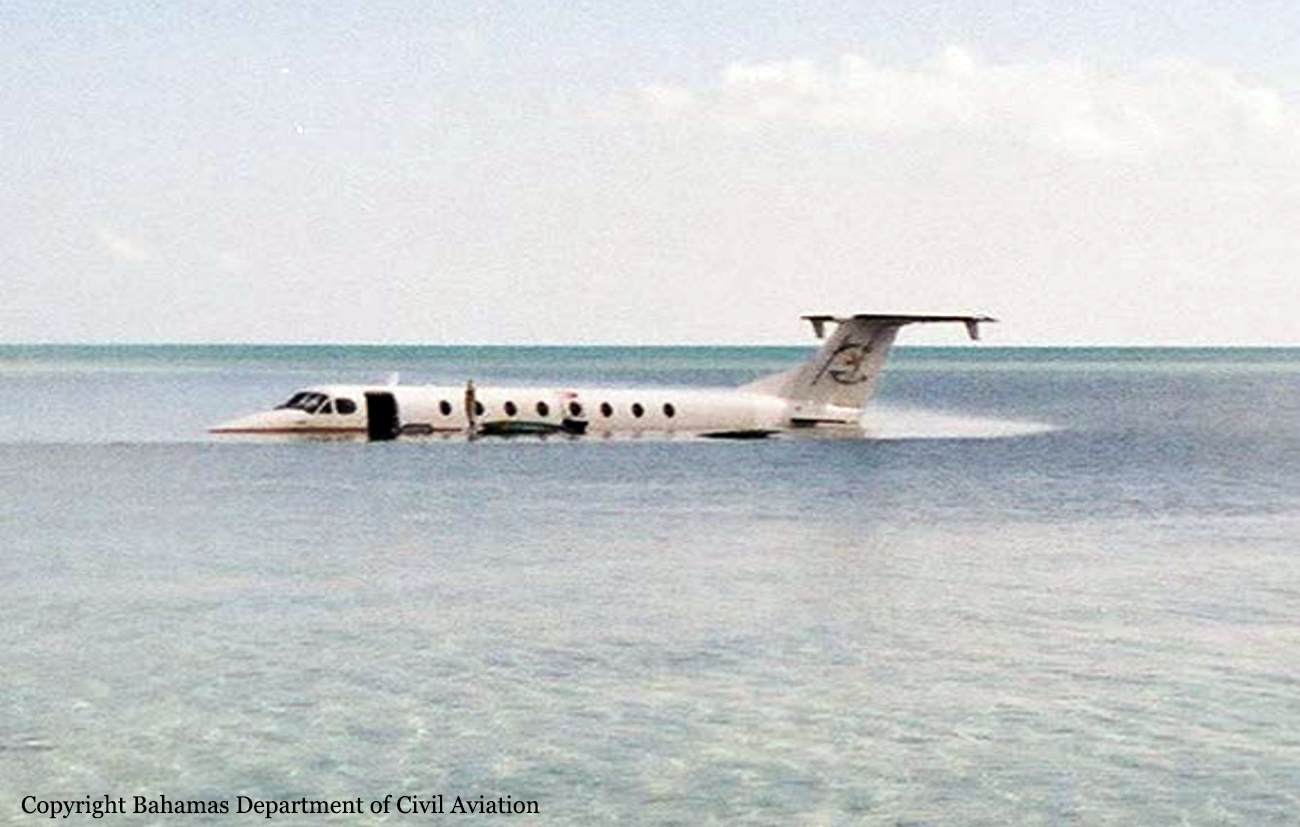


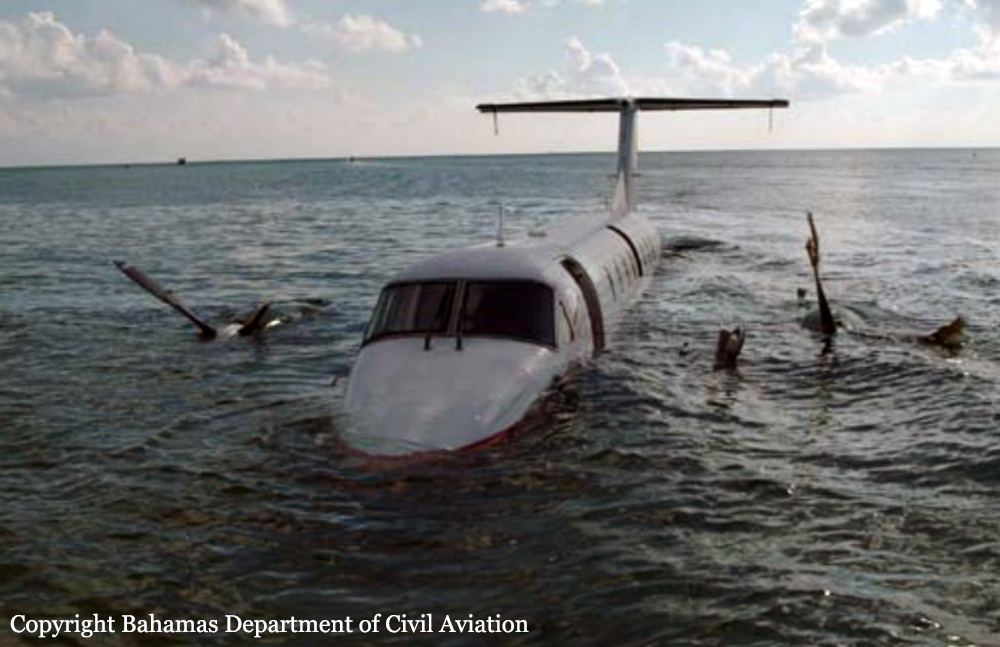

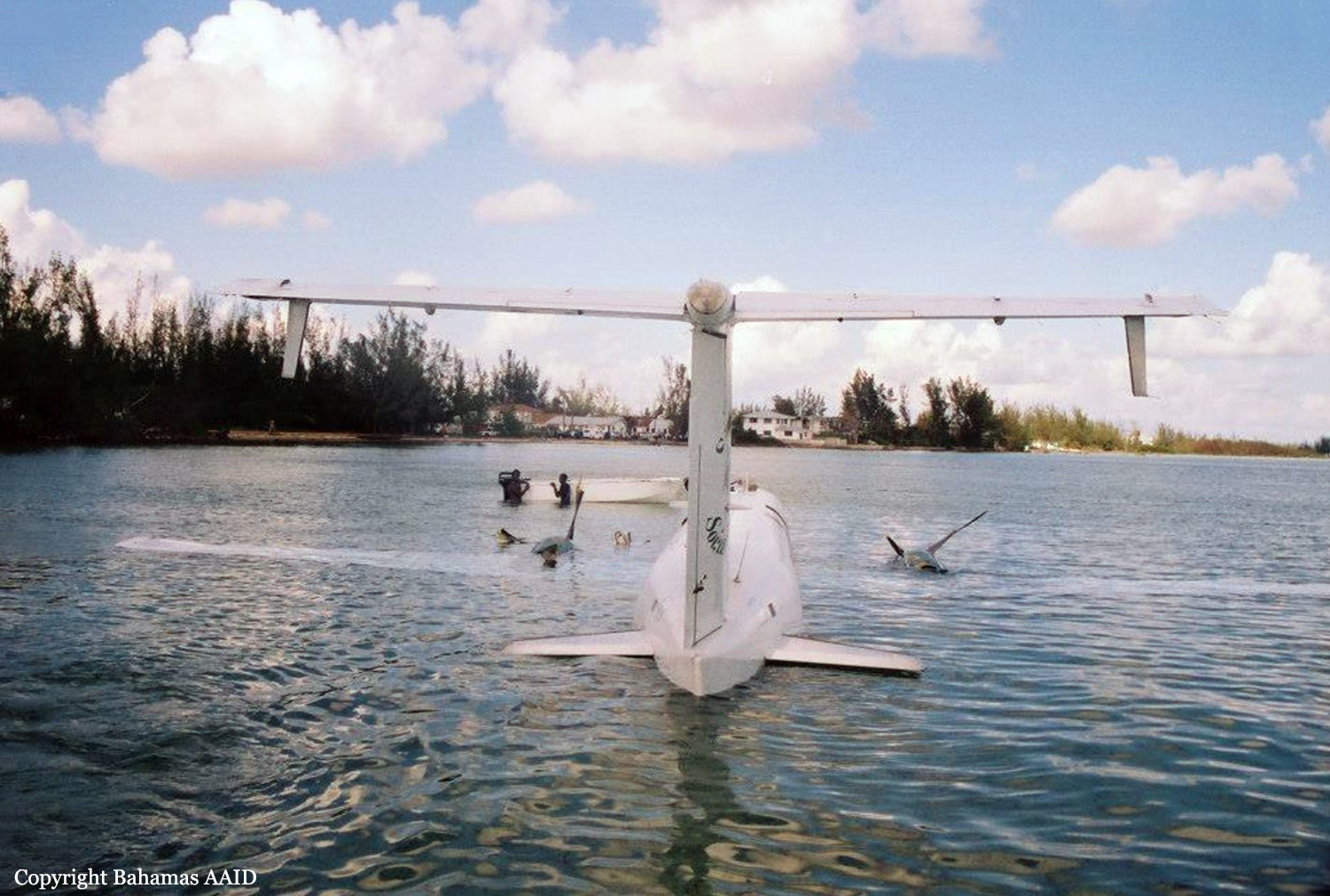



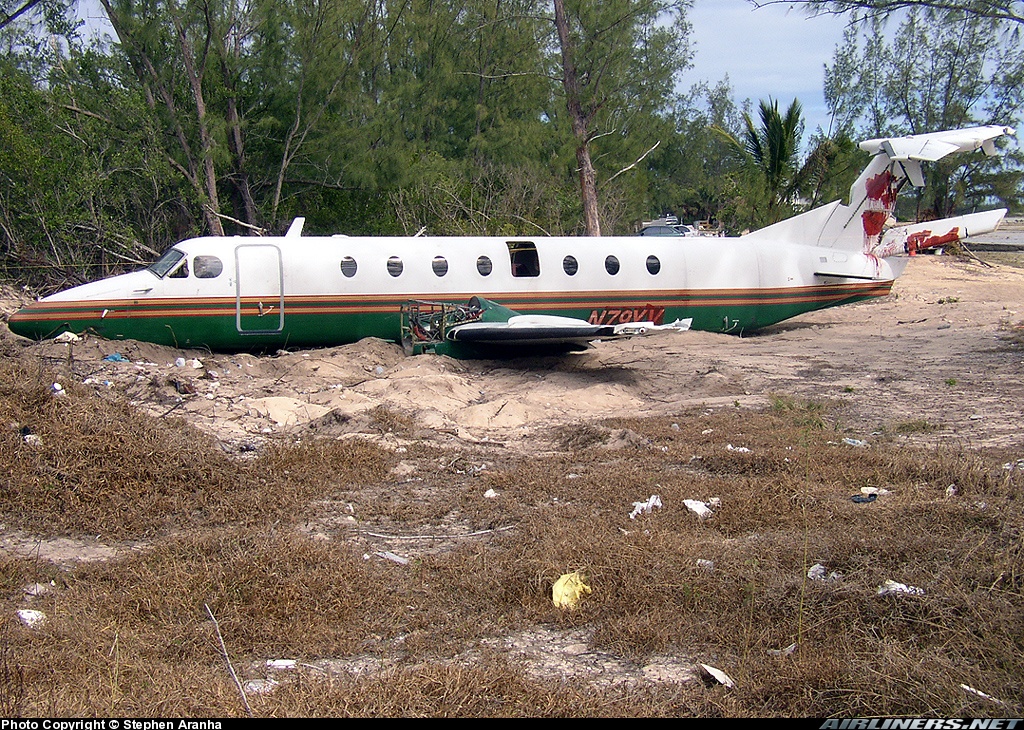
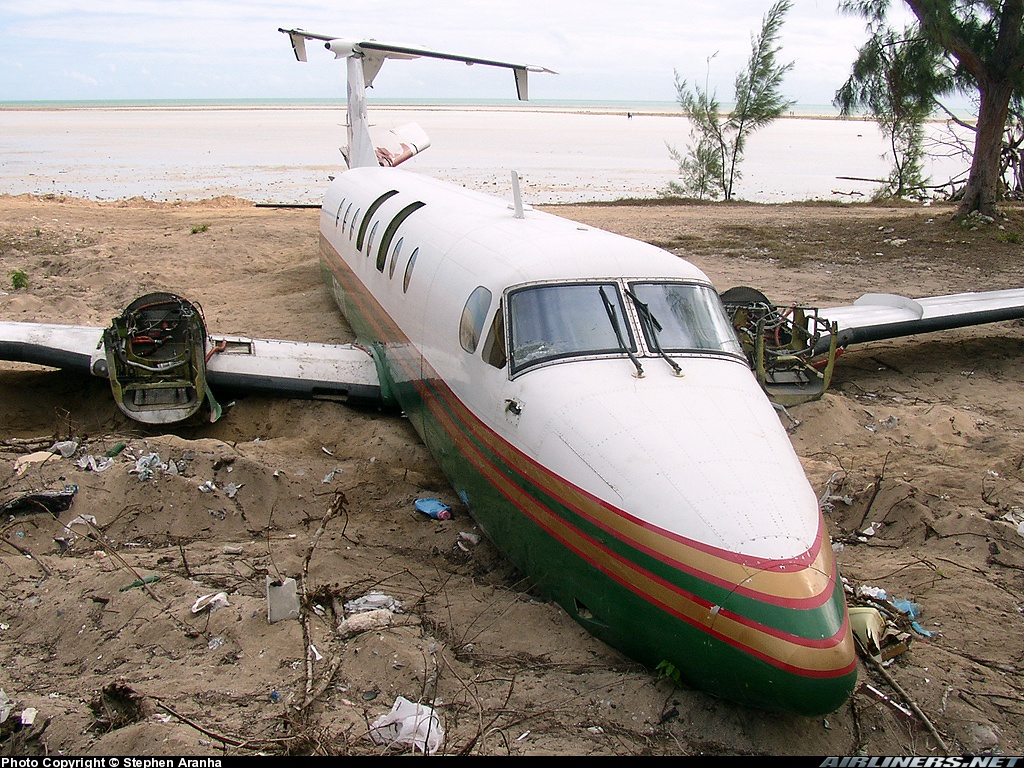
Crash of a Beechcraft 1900C near Tonopah: 5 killed
Date & Time:
Mar 16, 2004 at 0401 LT
Registration:
N27RA
Survivors:
No
Schedule:
Groom Lake - Tonopah
MSN:
UB-37
YOM:
1985
Crew on board:
1
Crew fatalities:
Pax on board:
4
Pax fatalities:
Other fatalities:
Total fatalities:
5
Circumstances:
The Air Force Materiel Command Beech 1900 crashed while on a routine support mission from a remote classified airstrip on the Nellis range to the Tonopah Test Range. It departed at 03:43 for Tonopah. After reporting the runway lights in sight, the pilot configured the airplane for the approach and initiated a circling maneuver to the right for a visual straight-in approach to runway 32. During the turn the pilot suffered a sudden cardiac death. Half way through the turn the airplane began a gradual descent until it impacted the ground. The airplane broke up and burst into flames. Investigation revealed that the pilot had violated federal policy and directives, wilfully deceived flight medical examiners, suppressed significant medical information and ingested inappropriate medications for a deteriorating and dangerous health condition. The pilot had high blood pressure and failed to report it, and denied taking medications to his Federal Aviation Administration flight physical examiners.
Probable cause:
The pilot became incapacitated during his approach to land due to sudden cardiac death.
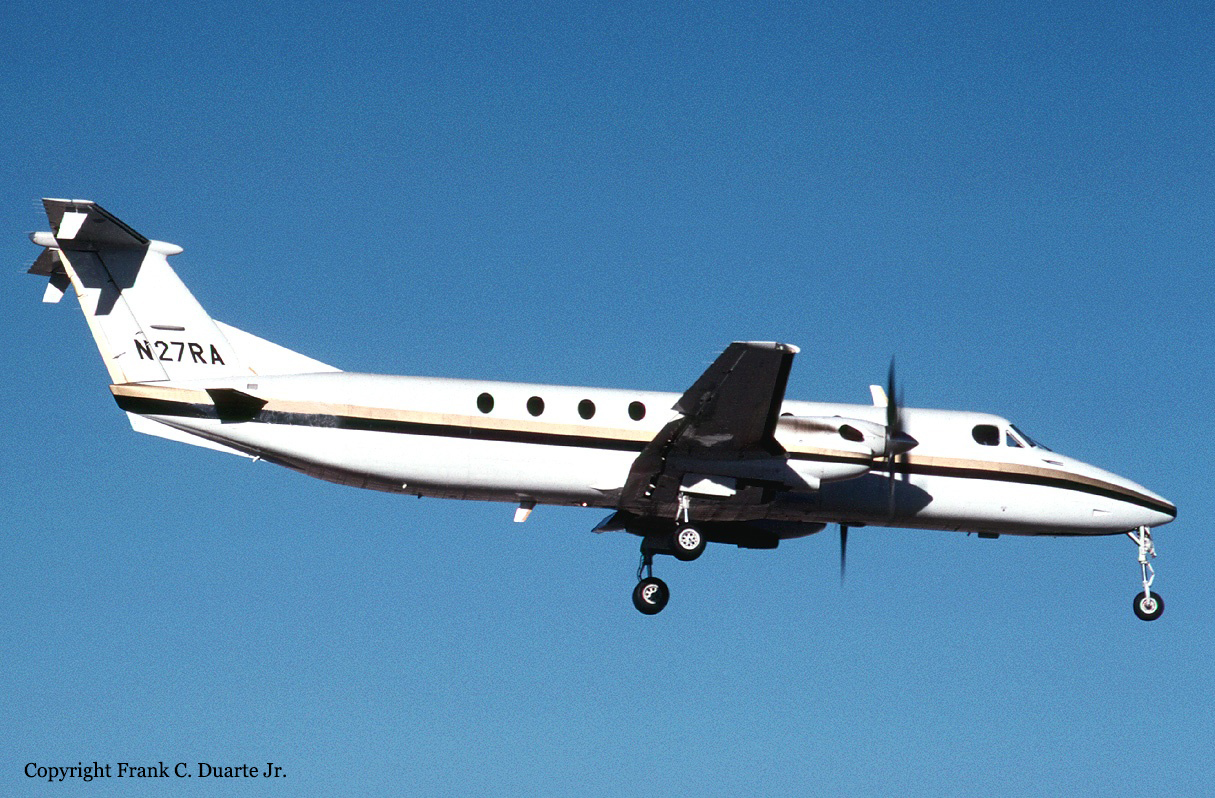
Crash of a Beechcraft 1900C-1 in Kinshasa
Date & Time:
Apr 29, 2003 at 1930 LT
Registration:
TR-LFQ
Survivors:
Yes
Schedule:
Brazzaville - Kinshasa
MSN:
UC-80
YOM:
1989
Crew on board:
2
Crew fatalities:
Pax on board:
13
Pax fatalities:
Other fatalities:
Total fatalities:
0
Circumstances:
The twin engine aircraft departed Brazzaville on a charter flight to Kinshasa, carrying 13 passengers (all Air France crew members) and two pilots. On approach to Kinshasa, the crew encountered poor weather conditions with thunderstorm activity, heavy rain falls and strong crosswinds. After touchdown, the aircraft became unstable, deviated to the left and veered off runway. While contacting soft ground, the aircraft lost its undercarriage and slid for few dozen metres before coming to rest beside the runway. All 15 occupants escaped uninjured but the aircraft was damaged beyond repair.
Probable cause:
It is believed that the aircraft became unstable at touchdown due to strong crosswinds. A inappropriate reaction on part of the pilot-in-command, an overcorrection or a wrong configuration may have been a contributing factor.
Crash of a Beechcraft 1900C in Eagleton: 3 killed
Date & Time:
Dec 9, 2002 at 1140 LT
Registration:
N127YV
Survivors:
No
Schedule:
Wichita - Mena
MSN:
UC-127
YOM:
1990
Crew on board:
2
Crew fatalities:
Pax on board:
1
Pax fatalities:
Other fatalities:
Total fatalities:
3
Aircraft flight hours:
12473
Circumstances:
The aircraft collided with mountainous terrain in a level descent during a visual approach to the destination airport. According to recorded radar data, 10 minutes after descending from 15,000 feet, the flight impacted about 200 feet below the top of the partially obscured ridgeline (elevation of 2550 feet), and 8 miles from the destination. The data indicates the flight path was similar to the global positioning satellite (GPS) approach to the airport. Six minutes before the accident, and the pilot's last transmission to air traffic control, he was informed and acknowledged that radar service was terminated. The flight was 12.4 miles from the accident site when radar contact was lost. Reduced visibility due to fog hampered search & rescue efforts, and the aircraft wreckage was located the next day. The aircraft was equipped with a GPS navigation system; however the installation was incomplete, restricting its use to visual flight rules (VFR) only. The investigation did not determine if the GPS was being used at the time. A non-enhanced Ground Proximity Warning System was also installed. The maximum elevation figure listed on the sectional aeronautical chart covering the area of the accident site and destination airport was 3000 feet mean sea level. The chart also shows an advisory for the area to use caution due to rapidly rising.
Probable cause:
In-flight collision with terrain due to the pilot's failure to maintain clearance and altitude above rapidly rising terrain while on a VFR approach. Contributing factors were the obscuration of the terrain due to clouds.
Final Report:
Crash of a Beechcraft 1900C in Saint John's
Date & Time:
Sep 14, 2001 at 2118 LT
Registration:
C-GSKC
Survivors:
Yes
MSN:
UB-27
YOM:
1984
Flight number:
SLQ621
Crew on board:
2
Crew fatalities:
Pax on board:
0
Pax fatalities:
Other fatalities:
Total fatalities:
0
Circumstances:
On take off from runway 11 at St. John's, the crew felt the nose of the aircraft rise to a high-pitch attitude. The aircraft climbed to about 150 to 200 feet, and was about to enter cloud when the crew reduced power. The crew lowered the nose, and force-landed the aircraft on the runway. The main gear, wings, engines and fuselage sustained substantial structural damage. Weather conditions at the time of the crash were reported as: winds 090° at 25 knots gusting to 35 knots, horizontal visibility 1/2 statute mile in light rain and fog, vertical visibility 100 feet, temperature 15° Celsius, dew point 15° Celsius, altimeter 29.31 Hg., pressure dropping.





